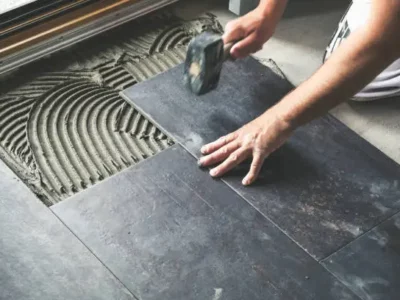When it comes to renovating or demolishing a space, strip-outs are often the first order of business. These procedures involve removing all non-structural elements of a building and preparing it for the next phase of construction. But not all strip-outs are created equal. Depending on your project, you might find yourself deciding between two main categories: commercial and residential strip-outs.
Let’s dive into the world of strip-outs, explore the key differences between commercial and residential strip-outs, and discuss what factors should influence your choice.
Understanding Commercial Strip-outs
Commercial strip-outs are about transforming spaces and enhancing the aesthetics and functionality of both interiors and exteriors. These primarily revolve around businesses, offices, and retail spaces and are typically larger in scale and complexity. Think of tearing down walls, removing fixtures, and clearing out everything to make way for a new business setup.
In commercial settings, time is often of the essence. Businesses can afford prolonged downtime, so efficiency is paramount. That’s where professionals come into play. Hiring experienced contractors for commercial strip-outs ensures not only speed but also compliance with strict regulations.
But what about the cost? Commercial strip-outs can be more expensive due to the scale and scope of the project. However, the investment is often justified by the potential for a quicker turnaround and minimal disruption to business operations.
Residential Strip-outs Unveiled
Residential strip-outs, on the other hand, are centred around homes, apartments, and other living spaces. These projects are usually smaller in scale compared to their commercial counterparts, but don’t let that fool you – they come with their own set of challenges.
According to real estate experts from Century 21 Glenfield, common scenarios that call for residential strip-outs include home renovations, preparing a house for sale, or simply giving your living space a fresh start. Here, you have the option of going the DIY route or hiring professionals.
For those with a DIY spirit and a smaller budget, residential strip-outs can be manageable. You can carefully plan and execute the project on your own. However, keep in mind that even in residential settings, some structural elements might be at play, and you should proceed with caution.
Where Do They Differ?
Now, let’s break down the key differences between these two types of strip-outs:
- Structural Complexity: Commercial strip-outs often involve more intricate structural elements like steel beams and extensive wiring and plumbing systems. Residential strip-outs are typically less complex in this regard.
- Regulatory Requirements: Commercial projects are subject to stricter regulations, often necessitating permits and inspections. Residential strip-outs usually have fewer bureaucratic hurdles to clear.
- Timeline and Project Scale: Commercial strip-outs require meticulous planning to minimize business disruption, while residential projects may offer more flexibility in terms of timeline.
- Cost Variations: Due to their size and complexity, commercial strip outs can be more expensive than residential ones.
- Environmental Impact: Commercial projects may have a greater environmental footprint due to the volume of materials involved. Residential strip-outs generally have a smaller ecological impact.
Factors to Consider When Choosing
So, how do you decide which strip-out is right for you? Consider these factors:
- Nature of the Property or Building: Is it a business space or a residential one? The type of property should be your first consideration.
- Project Goals and Objectives: What are you trying to achieve with the strip-out? Is it a complete transformation or just minor improvements?
- Budget Constraints: Your budget will play a significant role in your decision. Commercial strip-outs tend to cost more, but they may also yield quicker returns on investment.
- Legal and Permit Requirements: Check your local regulations. Commercial projects often involve more red tape, which can affect your timeline and budget.
- Sustainability and Eco-friendliness: If you’re environmentally conscious, consider the impact of your project. Residential strip-outs may be a greener option.
Conclusion
In the commercial versus residential strip-out debate, there’s no one-size-fits-all answer. Your choice should be driven by the specific needs of your project, your budget, and your timeline. Remember that both options have their merits and drawbacks. Consulting with professionals in the field can provide invaluable guidance. In the end, your decision should align with your goals and ensure a successful transition to the next phase of your construction or renovation project.




















